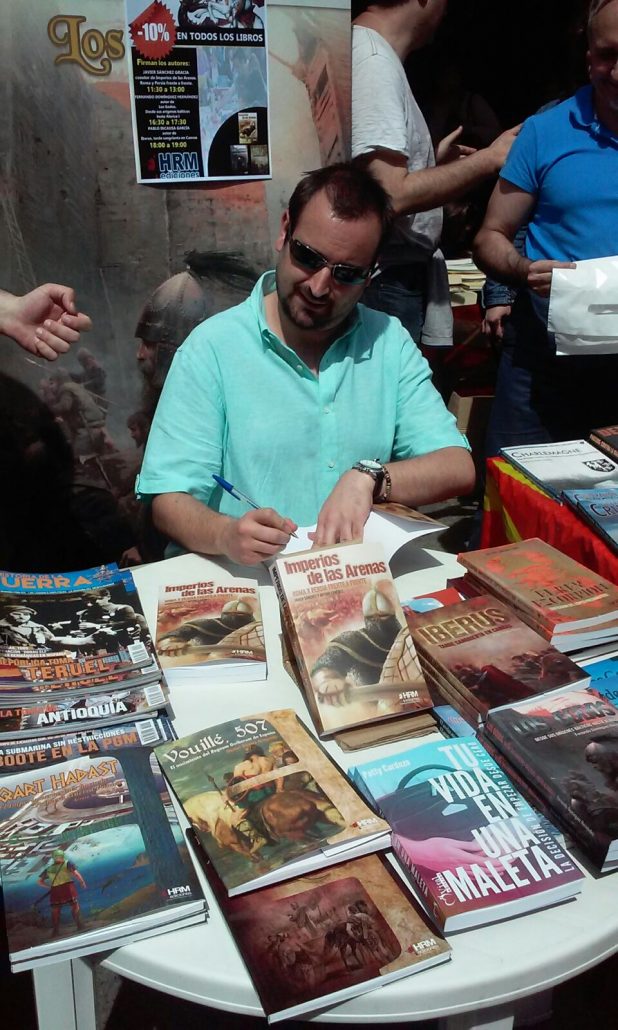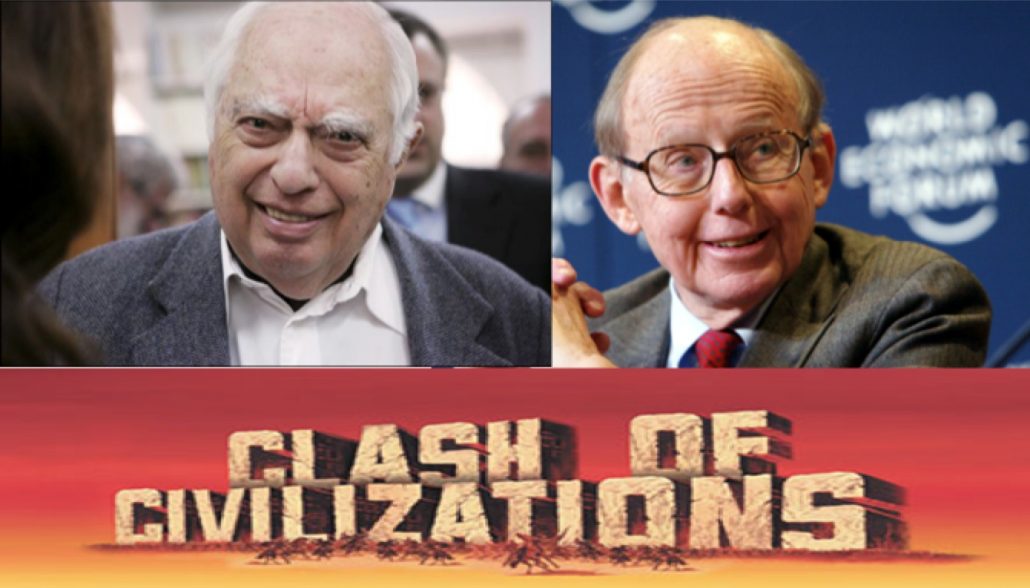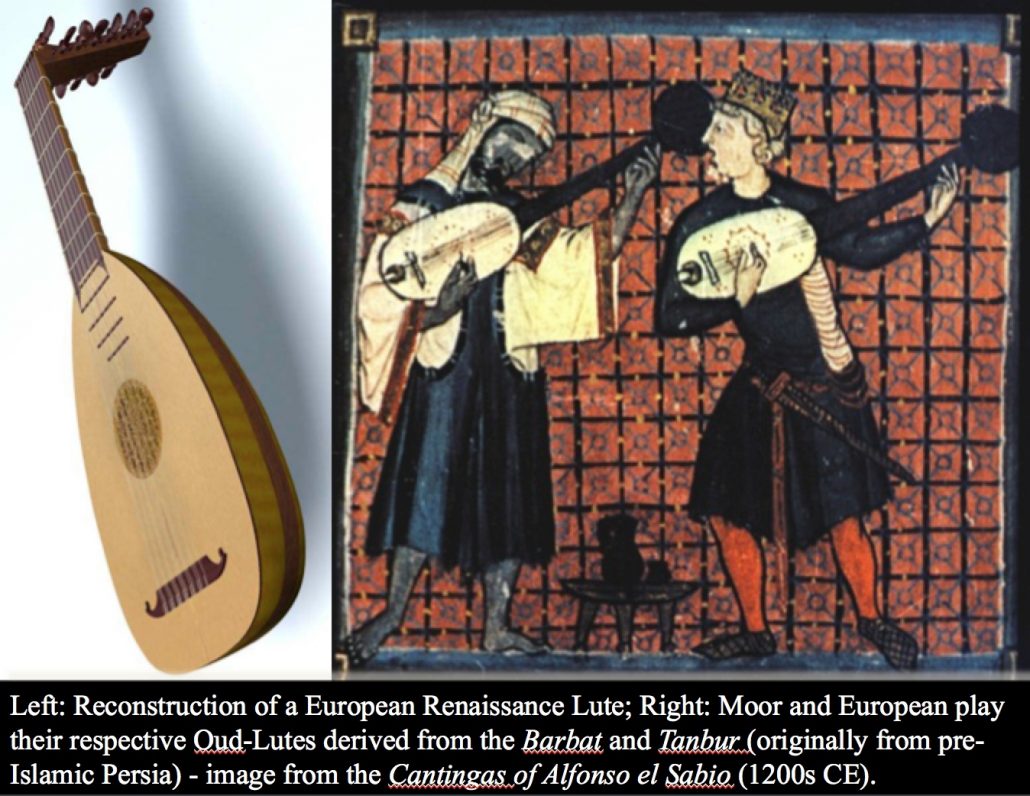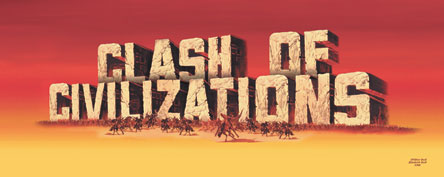The Persian Heritage Journal has published an article by Kaveh Farrokh and Javier Sánchez Gracia (download article in pdf from Academia.edu):

Spanish historian Dr. Javier Sánchez Gracia of the University of Zaragoza during the book signing of his recent text “Imperios de las Arenas: Roma y Persia Frente a Frente” (Empires at the sand: Rome and Persia Face to Face). The book signing above occurred during the “Feria del Libro de Zaragoza” book fair in Zaragoza, Spain on April 23, 2017.
As averred to in the initial parts of the Farrokh-Gracia article (page 12):
“It was the late Professor Samuel Huntington (1927-2008) whose New York Times Bestseller “The Clash of Civilizations and the Remaking of World Order” proposed two main premises: (1) that all wars are the result of a “Clash of Civilizations” and that (2) there has been a hostile long-term “East (mainly “Islamic” & “Middle East”) vs. West” dynamic. Bernard Lewis, who first coined the “Clash of Civilizations” myth in his article “The Roots of Muslim Rage” (penned for the September 1990 issue of the Atlantic Monthly) defined the dynamic as thus: the “Islamic World” (itself a simplistic concept) has been at war with the “West” for centuries.”

As cited in the Farrokh-Gracia article (page 13) note that the “Clash of Civilizations” myth has resurrected a … “… racial image … and … transferred this to the Ancient World to justify it. So, for example the late John Philippe Rushton of the University of Western Ontario, produced volumes of studies claiming to have proven that persons of “whiter” complexion (and Chinese descent) are more intelligent than persons with darker complexion. Despite the fact that the scientific validity of Rushdon’s studies have been seriously questioned by top international experts in the field of intelligence studies, Eurocentrist and racialist activists continue to cite his works. What is significant is how works such as those of Rushdon are used by Eurocentrists to promote the “Clash of Civilizations” myth.” The late Canadian (British-born) Psychology Professor John Philippe Rushton (1943-2012) (Source: SPLC) who claimed to have found “scientific” evidence linking complexion and intelligence. His viewpoint was duly expressed at the 2000 American Renaissance conference (cited in the SPLC – Southern Poverty Law Centre) “Whites have, on average, more neurons and cranial size than blacks… Blacks have an advantage in sport because they have narrower hips — but they have narrower hips because they have smaller brains.” In practice, mainstream scientists, intelligence experts, neurologists and academics overwhelmingly reject the late Rushton’s claims, however Eurocentrists who believe in the “Clash of Civilizations” continue to cite his (unsubstantiated) claims. For more on the late professor’s views visit the Southern Poverty Law Centre website … As noted in the Farrokh-Gracia article (page 13): “There are also several positive references to ancient Iran in the Classical sources, such the role of Cyrus the Great in his governance and especially religious and cultural freedoms. Eurocentrists … made a point at dismissing all ancient sources citing Cyrus in a favorable light as “ancient propaganda” … claiming that the “East” (ergo: Persia) had no contributory role [in the evolution of human rights] … when in effect ancient Greece (and the later Roman Empire) were influenced by several innovations in Persia such as the postal system and Royal road, aqueduct systems, the water wheel, etc. Put simply: the “West” and “East” have mutually influenced each other in highly constructive ways over the millennia in the fields of arts, architecture, technology, communications, theology and mythology, and culture. This information exposes the fraudulent nature of the Eurocentrist “Clash” myth …” Is there really a “Clash of Civilizations”? One of the lecture slides from Kaveh Farrokh’s Fall 2014 course at the University of British Columbia Continuing Studies Division “The Silk Route: Origins and History [UP 829]”. The slide above – Left: Reconstruction of a European Renaissance Lute; Right: Moor and European play their respective Oud-Lutes in harmony (from the Cantingas of Alfonso el Sabio, 1200s CE) – note that Oud-Lutes were derived from the Iranian Barbat and Tanbur originating in pre-Islamic Persia. For more on links between “East and West” download the following in Academia.edu: PhD Dissertation by Sheda Vasseqhi (University of New England; academic supervision team Academic advising Team: Marylin Newell, Laura Bertonazzi, Kaveh Farrokh): Positioning Of Iran And Iranians In Origins Of Western Civilization.– see also News Release …





